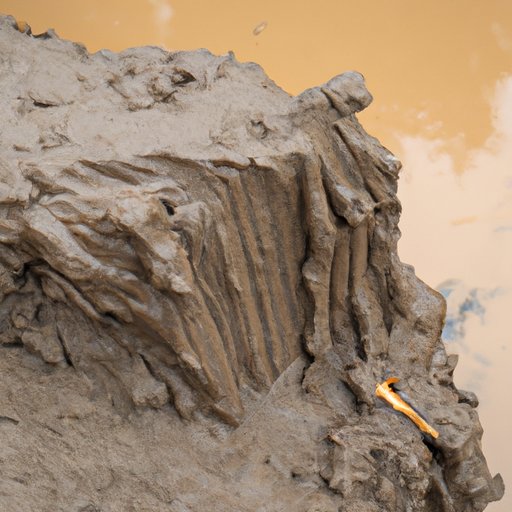Introduction
Sediment is an accumulation of solid particles derived from both natural and human activities that are deposited by wind, water, or ice. In Earth science, it is a key component of the environment, playing a vital role in the formation of soil, the transportation of nutrients, and the health of both aquatic and terrestrial ecosystems. This article will explore what sediment is in more detail, as well as the types of sediment, the impact it has on water quality and ecosystems, and the processes that form sediment.

Types of Sediment and Properties
The most common type of sediment is sand, which is composed of small grains (typically 0.06mm–2mm in diameter) of quartz, feldspar, rock fragments, and other minerals. Silt is finer than sand and consists of smaller particles (0.004mm–0.06mm in diameter) of quartz, feldspar, mica, and other minerals. Clay is even finer than silt, with particles typically measuring less than 0.004mm in diameter. Finally, organic matter can also be found in sediment, consisting of plant and animal remains that have been broken down by decomposition.
Sediment has both physical and chemical properties. Physically, sediment is characterized by its size, shape, texture, and color. The size and shape of sediment particles are determined by the process that formed them, while the texture and color are determined by the composition of the particles. Chemically, sediment is composed of various elements and compounds, including calcium, magnesium, sodium, potassium, phosphorus, and nitrogen.

Impact of Sediment on Water Quality
Sediment can have a significant impact on water quality. One of the primary effects is erosion, which occurs when sediment is transported by wind or water and deposited in other areas. This can lead to changes in the landscape, such as the formation of gullies and ravines. Erosion also increases the turbidity of water, which can reduce light penetration and limit the growth of aquatic vegetation.
In addition, sediment can also cause pollution. Pollutants such as heavy metals and nutrients can be attached to sediment particles and transported into bodies of water, resulting in degraded water quality. Nutrient loading is another issue associated with sediment, as excess nutrients can lead to algal blooms, reduced oxygen levels, and other problems.
Impact of Sediment on Ecosystems
Sediment can have a major impact on aquatic habitats, such as streams, rivers, lakes, and wetlands. For example, increased sedimentation can lead to decreased oxygen levels, which can have a detrimental effect on fish and other aquatic organisms. In addition, sediment can smother spawning grounds, reducing the number of eggs that hatch and survive. In extreme cases, sediment can even clog gill openings and suffocate fish.
In terrestrial habitats, sediment can affect soil fertility and the health of plants and animals. Excessive sediment can reduce the amount of air in the soil, leading to poor plant growth. In addition, it can fill in streams and ponds, reducing the availability of habitat for wildlife.
Processes That Form Sediments
Sediment is formed through several processes. Weathering is the breakdown of rocks and minerals into smaller pieces due to exposure to wind, rain, and other environmental factors. Erosion is the movement of this material from one place to another, often by wind or water. Transport describes the movement of sediment from one place to another, while deposition is the settling of the sediment in a new location.
These processes are all interconnected, with each stage building upon the previous one. For example, weathering breaks down rocks and minerals, which are then transported by erosion and deposited in a new location. This process is known as the sedimentary cycle, and it is essential for maintaining healthy ecosystems.
Conclusion
In summary, sediment plays an important role in Earth science, providing essential nutrients and helping to maintain healthy ecosystems. It is composed of particles of different sizes, shapes, and colors, and has both physical and chemical properties. Sediment can have a significant impact on water quality, leading to erosion, pollution, and nutrient loading. It can also affect aquatic and terrestrial habitats, with increased sedimentation reducing the availability of habitat for wildlife. Finally, sediment is formed through several processes, including weathering, erosion, transport, and deposition.
(Note: Is this article not meeting your expectations? Do you have knowledge or insights to share? Unlock new opportunities and expand your reach by joining our authors team. Click Registration to join us and share your expertise with our readers.)
